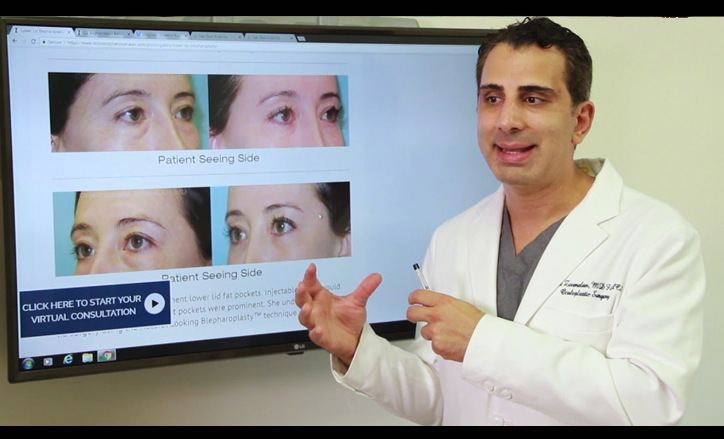Eyelid and Facial Chemical Peels
There are a variety of chemical peels available on the market. They are designed to improve the appearance of the face. Chemical peels can help to:
* Reduce fine lines under the eyes and around the mouth
* Treat wrinkles aused by sun damage, aging, and family history
* Improve the appearance of mild scarring
* Treat certain types of acne
* Reduce age spots, freckles, and dark patches due to pregnancy or taking birth control pills (melasma)
* Improve the look and feel of skin that is dull in texture and color
Some are available over the counter, and others, usually the more effective and potent formulations, are available by prescription from your plastic surgeon or dermatologist. Chemical peels work by accelerating the exfoliation of the skin process. They can be used every so often (usually under the care of a physician) to help rejuvenate the skin. Plastic surgeons may also use chemical peels at the same time when a blepharoplasty or facelift is performed to help reduce the fine-wrinkles that surgery often doesn’t help improve. Chemical peels are chemicals that improve and smooth the skin’s texture by removing the outer most damaged layers. It can help improve fine wrinkles, skin blemishes and slight pigmentary changes.
Standard TCA Chemical Peel stored in a bottle
Your doctor will use a precise formula customized to your skin to fit your needs and wishes. If you are interested in a mid peel to produce a smoother, brighter looking skin, mild peels such as AHAs would be suitable. AHAs can often be applied weekly to help obtain desired results. TCA peels are medium-deep peels that can improve fine wrinkles, skin blemishes and pigmentary changes. The recovery time is usually 1-3 weeks and depends on your skin type and the TCA concentration used. Patients should be warned that although TCA is a mild peel, some can respond with significant redness and slight discomfort for up to 2 weeks. Darker skinned patients should be careful with higher TCA concentrations since it can change the skin color within the treated areas. TCA peel treatment often takes 10-15 minutes and the peel depth can be adjusted depending on the desired outcomes. Phenol peels are the strongest of the peels and penetrate deep skin layers. As a result, it can improve deeper facial wrinkles. Recovery takes several weeks and can be very discomforting. Phenol peels should be reserved for special cases under direct care of a plastic surgeon. I don’t like to perform phenol peels and would rather use laser resurfacing.
How to plan for a chemical peel
Once you and your doctor have decided that you are a good candidate for a peel, you may need to be pretreated with a prescription medication to allow optimal penetration of the peel throughout the skin layers. I like to give Retin A prior to treatment when using TCA 20% or more. Depending on the peel, you may need to arrange for someone to drive you home after the surgery as well.
What to expect the day of the peel
You may be given mild sedation during the procedure, but usually not necessary with lighter peels such as AHA or TCAs. Most peels can be performed in the office and the whole procedure can last 10-15 minutes. It’s normal to experience a slight stinging sensation for several minutes. This is the peel working within the skin.
What to expect after your treatment
It is common to experience some flaking redness to the skin. Adequate lubrication to the areas peeled should be performed using aquafore. This helps prevent the skin from drying. Deeper peels can often cause significant facial swelling. You may be prescribed a daily wash to help in the healing process. The effects of the peel may be subtle at first, but with time, you may detect a healthier shine to your skin. The effects may not be permanent, and repeated, lighter peels (maintenance peels) can help improve the general texture of your skin.



